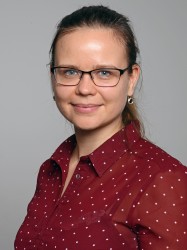BibTex format
@article{Jauneikaite:2020:10.1016/j.cmi.2019.07.014,
author = {Jauneikaite, E and Ferguson, T and Mosavie, M and Fallowfield, JL and Davey, T and Thorpe, N and Allsopp, A and Shaw, AM and Fudge, D and O'Shea, MK and Wilson, D and Morgan, M and Pichon, B and Kearns, AM and Sriskandan, S and Lamb, LE},
doi = {10.1016/j.cmi.2019.07.014},
journal = {Clinical Microbiology and Infection},
pages = {381.e1--381.e6},
title = {Staphylococcus aureus colonisation and acquisition of skin and soft tissue infection amongst Royal Marines recruits: A prospective cohort study},
url = {http://dx.doi.org/10.1016/j.cmi.2019.07.014},
volume = {26},
year = {2020}
}

